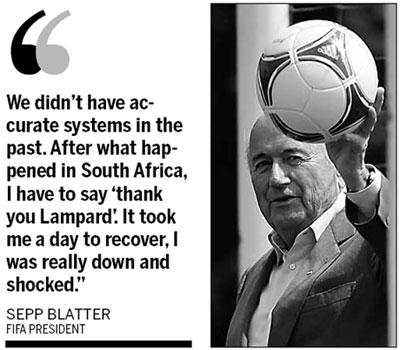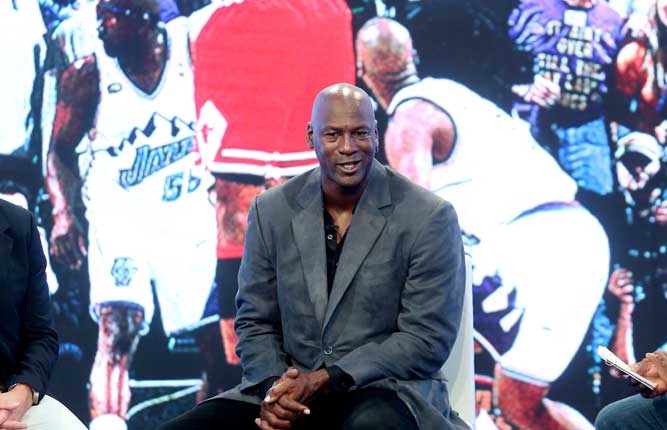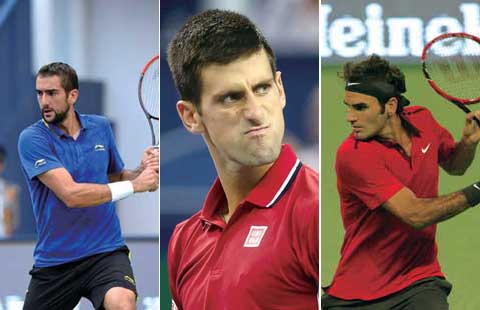


Soccer body also decides women can wear headscarves in games
Soccer's rulemakers and its governing body FIFA bowed to pressure on Thursday when they finally approved the use of goal-line technology and agreed to allow Muslim women players to wear a headscarf.
The first decision followed widespread calls from players, coaches and the media, after a series of embarrassing high profile incidents in which perfectly good goals were disallowed because officials did not see the ball had crossed the line.
The second followed international criticism after Iran's women's team lost its chance of qualifying for the Olympics because it was not allowed to play a crucial match after players refused to take off their headscarves.
In both cases, FIFA and its rule-making body, the International Football Association Board (IFAB), which unanimously approved the proposals on Thursday, had initially held out in the face of popular opinion.
The debate over goal-line technology lasted a decade as FIFA, led by president Sepp Blatter, insisted that human mistakes were part of the worldwide appeal of football.
In the case of headscarves, FIFA refused to lift the ban due to safety issues and because they were not included in the rules of the game. The campaign to allow headscarves, already permitted in other sports such as rugby and taekwondo, was led by FIFA vice-president and executive committee member Prince Ali Bin Al-Hussein of Jordan.
The United Nations had also appealed for the garment to be permitted.
"To all women players worldwide, congratulations," Prince Ali said in a statement. "We all look forward to seeing you performing on the field of play. Women's football is on the rise and we are all counting on you. You have our full support."
Blatter said that the turning point for goal-line technology was Frank Lampard's infamous phantom goal for England against Germany in the 2010 World Cup finals, disallowed when it was clearly over the line.
A similar incident had a significant effect on the outcome of Italy's Serie A title last season, when AC Milan had a goal disallowed in a top-of-the-table match against Juventus.
Milan, denied a 2-0 lead, was held 1-1 and Juventus went on to win the championship.
Thank you Lampard
"We didn't have accurate systems in the past," Blatter said. "After what happened in South Africa, I have to say 'thank you Lampard'. It took me a day to recover, I was really down and shocked."
Two systems were approved: Hawk-Eye, which is used in tennis and cricket and based on optical recognition with cameras, and GoalRef, which uses a magnetic field and a special ball to identify a goal situation.
Tested exhaustively and the only survivors from 10 original contenders, both systems are capable of telling the referee within one second whether the ball has crossed the line or not.
They will remain optional, although FIFA has said they will be used in its own competitions, starting with the Club World Cup in December and including the 2014 World Cup in Brazil. UEFA president Michel Platini remained opposed to goal-line technology until the bitter end, saying it would open the way for other forms of technology in the future.
This was refuted by IFAB board members.
"None of us are considering any type of technology which would interfere with the free-flowing nature of our game," said Alex Horne, the English member of the IFAB.
"We do not believe it is appropriate for technology to creep out into other areas, we are deliberately drawing a line and saying that goal-line technology is where it stops."
Platini's consolation was that the IFAB also approved the five-man refereeing teams that have been pioneered by UEFA.
These feature an extra linesman behind each goal-line in addition to the two on the touchlines, and have been used on an experimental basis recently in several competitions including the Champions League and Euro 2012.
The system was credited at Euro 2012 with reducing the amount of pushing in the penalty area, as well as cutting down on players attempting to win penalties by diving.







